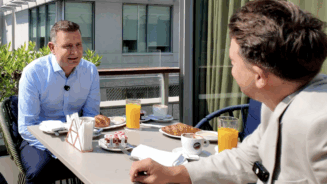Drilling down into current holdings, Lake says the high-yield fund is predominantly exposed to home building and auto supplies in the US.
While the auto sector has been under a lot of pressure recently, with the emissions scandal at Volkswagen making it the biggest mover of late, he points out that the predominance of petrol cars in the US means it only had 800,000 VW diesel vehicles in that market.
“Fiat is a big exposure for us. Fiat has the Chrysler business that is very focused on Jeeps in the US, which is also a big seller. From that point of view, the companies we are looking at have been affected more by sentiment than anything else, not really by their credit metrics.”
He therefore characterises the situation as more of an opportunity than a threat, with, he admits, some short-term pain.
Strategic bonds
Turning to the strategic bond fund, its top weightings are predominantly financials with some big investment-grade companies, such as RBS, GE and Coca-Cola.
“We are trying to focus more on capital preservation and lower volatility. That is the theme through both funds. We have accepted that fixed income at this point in time has less on offer in terms of returns.
“Therefore, managing the downside is more important to us than trying to eke out the last penny when the market’ is rallying.”
The problem comes when there are periods of volatility and the associated risk-off trading. Lake cites the past quarter as the worst for high yields over the past four years, with US high yields down 5% this quarter.
“With the high-yield fund, we went into the summer in a risk-off mode. The issue we had was the risk-off we were expecting was not the risk-off that materialised.”
His strategic thinking was there would be some volatility around a rate rise in September.
“We felt that was the most logical time for a rate hike,” he says. “We began to change our view in August when we started seeing the Chinese volatility. So, we managed our duration high-yield risk towards that but probably did not take off enough risk.”
The other characteristic of this market is the strong correlation between different asset classes, he says.
Risk-off
“During that period, you would have expected definitely a risk-off on high-yield equities, maybe even some investment grades, with perhaps treasuries rallying.
“You did see that to a certain extent but, actually, treasuries did not rally that much because of the interest rate potential issue.
“Then we had investment grade and high yield in lockstep, in terms of underperformance. If you look at investor returns over that period, there were only a couple of investors who managed to stay flat.
“This is the other problem you have – the markets are not behaving as they have done in the past, which adds another dimension of difficulty in terms of investing.”
Against this backdrop, Lake is de-risking out of credits he believes will not perform well and is adding quality names where there is more of a domestic focus, thereby adding to the portfolio’s credit quality.
“We recognise there is now a degree of value to be seen. We are beginning to think that this is the time to be adding these names because they are the ones that will rally first when the market turns.”
The main focus is on the developed world, the US in particular, and two further major themes for the funds are underweight positions in emerging markets and energy.
“Energy has been a very difficult sector to be invested in and I think that is going to continue. That is where you will see most of the defaults next year in US high yield.”
He is less excited about Europe than the US, just from a valuation perspective, albeit recognising that quantitative easing should be supportive for spreads.
“The risk is that China has a big impact on Europe, particularly Germany’s luxury car exports. That is something we are focusing on.”
Adding value
Picking the right credits is key in this increasingly volatile, idiosyncratic market, he says.
“Last year, we did not add much value as volatility was very low. Everything was very highly correlated. The correlations are still there during periods of stress but the relationships are breaking down in some areas.
“Emerging markets and energy are having some knock-on effects on other parts of the economy. So there are opportunities now volatility has gone up.
“For an active manager, these are the kind of times when you can actually add value.” l




